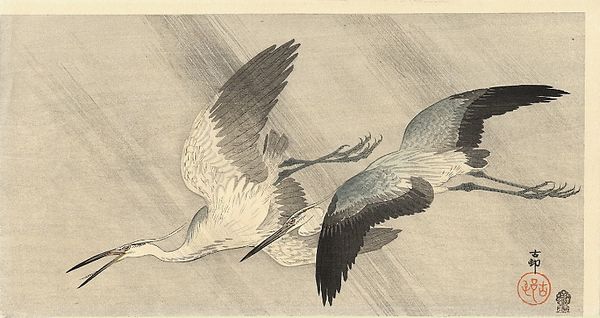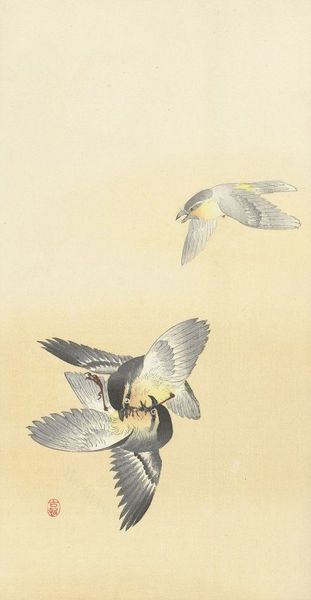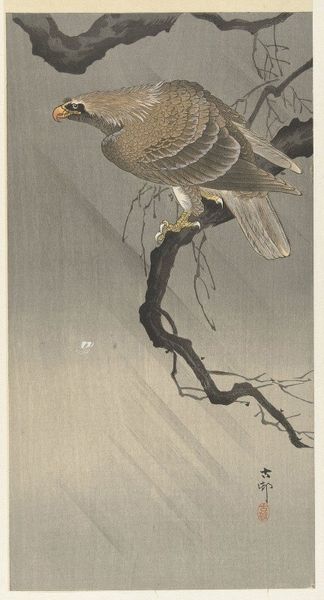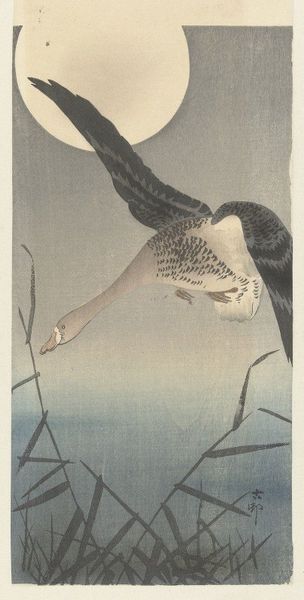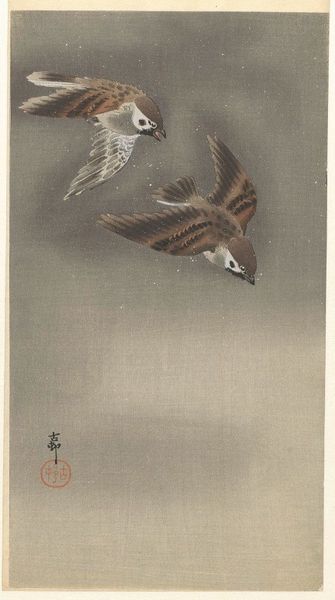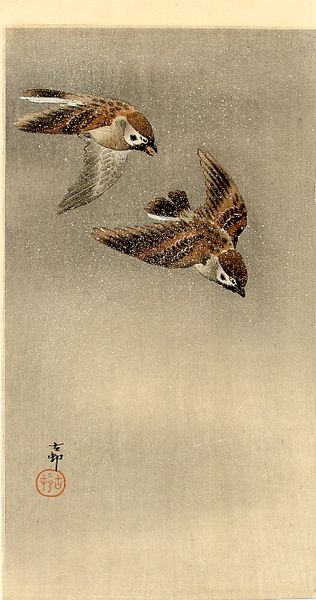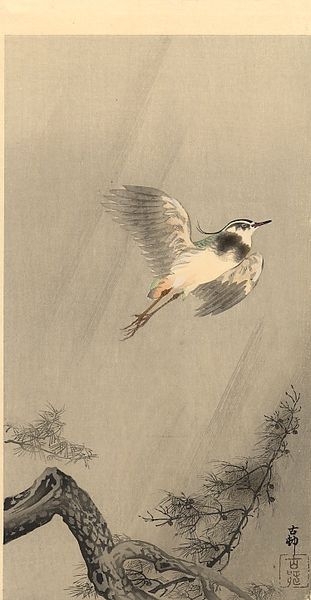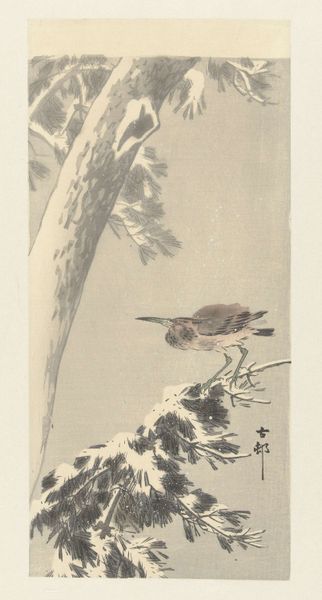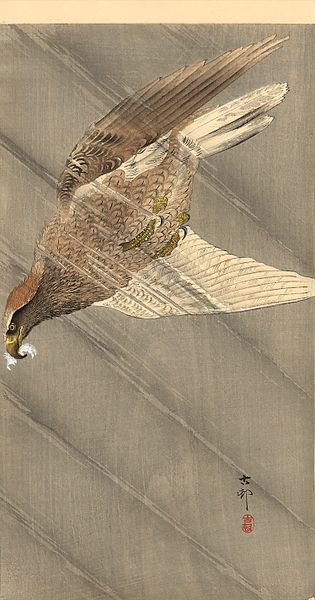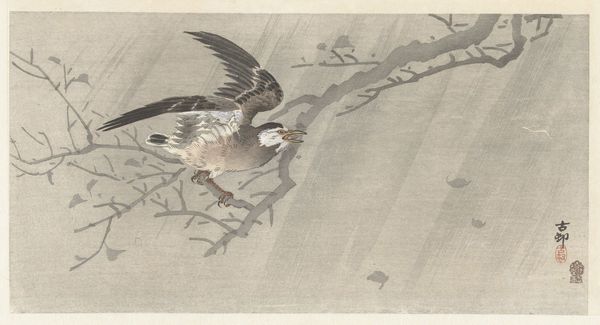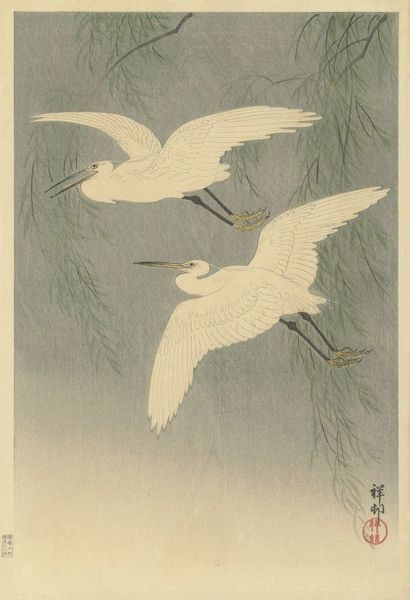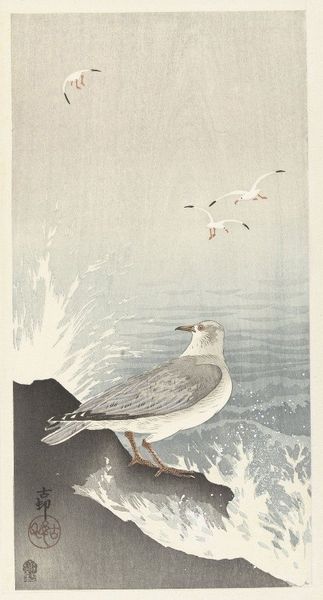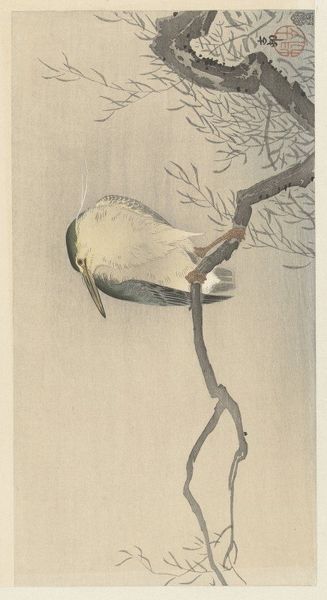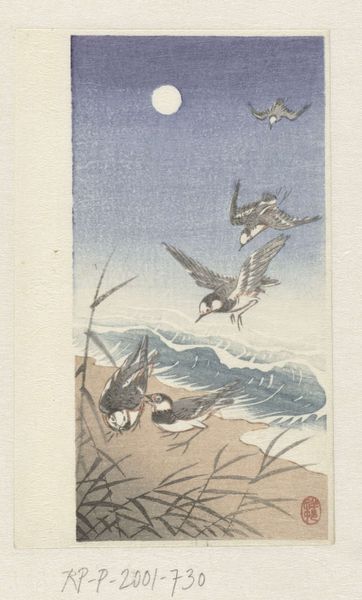
Copyright: Public Domain: Artvee
Curator: So melancholic, yet vibrant somehow. Editor: Indeed. Let's delve into this arresting work titled "Songbirds in Rain." It is an early 20th-century woodblock print crafted by the Japanese artist, Ohara Koson, specifically sometime between 1900 and 1910. The scene presents a fleeting moment, an exploration into avian vulnerability amidst the elements. Curator: I see what you mean. The artist manages to suggest a very particular mood. Looking at the grey background and the delicate rendering of the rain, there is something beautifully bleak, you know? It does have a quality akin to some of Whistler’s works in the arrangement of elements within the pictorial space, what do you think about that idea? Editor: A comparative framework always offers intriguing perspectives! There’s that liminal atmospheric quality in Whistler but here in Koson’s print, this piece adheres, structurally, to a dynamic asymmetry deeply rooted in Ukiyo-e traditions. Observe how the birds’ placement isn’t merely representational; the upper bird seems to sing, while the other is pointed almost towards the ground. This evokes both movement and emotional responsiveness to their surroundings. The whole composition conveys a spatial understanding resonant with both symbolism and careful craftsmanship. Curator: Absolutely. And there’s a definite Impressionistic element here. That sketchy line that composes each bird and plant evokes a quick study—an attempt to capture something elusive before it vanishes. And did I mention that the gray and pale sepia palette creates a soft, dreamlike feel? It definitely reinforces the emotional component that you suggest. Editor: Yes, quite so! And given that it is a print, we can examine the deliberate application of color blocks to define form and texture and line which produces those very affecting tonal gradations. What seems spontaneous, isn’t. The artist is intentionally revealing or obscuring parts to generate atmosphere and visual impact, I think. Curator: I get that completely. Okay, so my intuitive sense of the art isn’t fully the truth, huh? Koson gets the last laugh this time! Editor: In art there are no last laughs…only enduring dialogues!
Comments
No comments
Be the first to comment and join the conversation on the ultimate creative platform.
